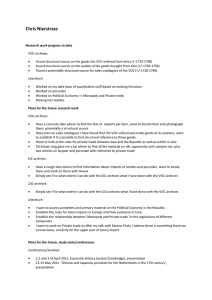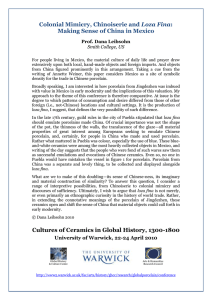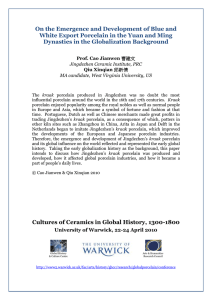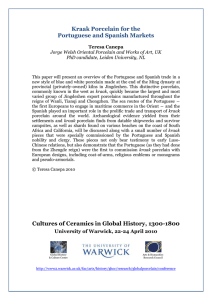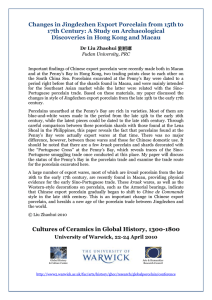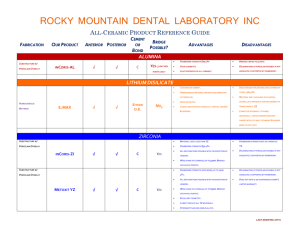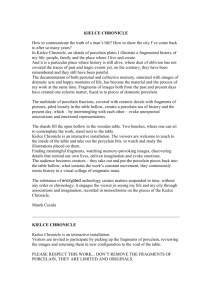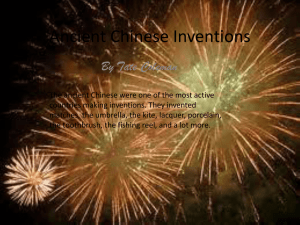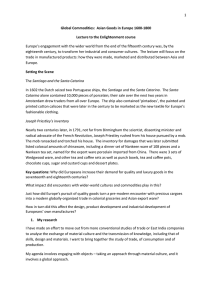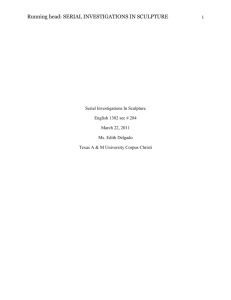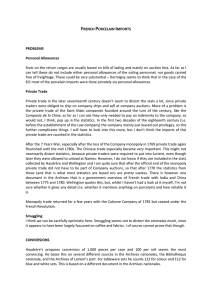The Quest for True Porcelain
advertisement
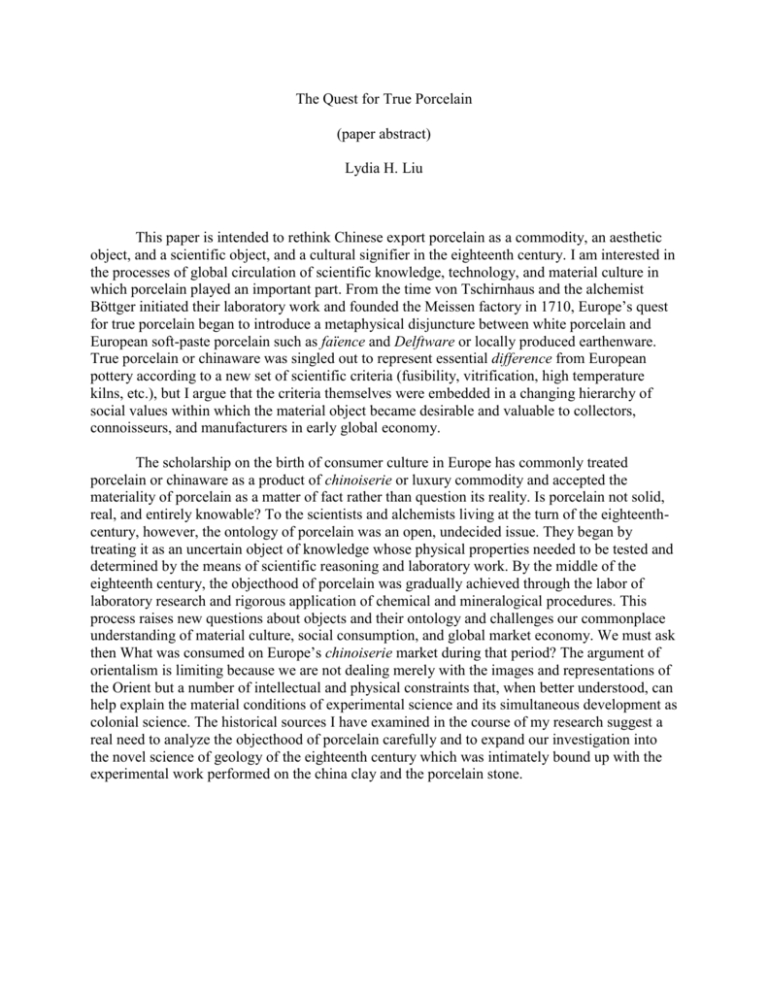
The Quest for True Porcelain (paper abstract) Lydia H. Liu This paper is intended to rethink Chinese export porcelain as a commodity, an aesthetic object, and a scientific object, and a cultural signifier in the eighteenth century. I am interested in the processes of global circulation of scientific knowledge, technology, and material culture in which porcelain played an important part. From the time von Tschirnhaus and the alchemist Böttger initiated their laboratory work and founded the Meissen factory in 1710, Europe’s quest for true porcelain began to introduce a metaphysical disjuncture between white porcelain and European soft-paste porcelain such as faïence and Delftware or locally produced earthenware. True porcelain or chinaware was singled out to represent essential difference from European pottery according to a new set of scientific criteria (fusibility, vitrification, high temperature kilns, etc.), but I argue that the criteria themselves were embedded in a changing hierarchy of social values within which the material object became desirable and valuable to collectors, connoisseurs, and manufacturers in early global economy. The scholarship on the birth of consumer culture in Europe has commonly treated porcelain or chinaware as a product of chinoiserie or luxury commodity and accepted the materiality of porcelain as a matter of fact rather than question its reality. Is porcelain not solid, real, and entirely knowable? To the scientists and alchemists living at the turn of the eighteenthcentury, however, the ontology of porcelain was an open, undecided issue. They began by treating it as an uncertain object of knowledge whose physical properties needed to be tested and determined by the means of scientific reasoning and laboratory work. By the middle of the eighteenth century, the objecthood of porcelain was gradually achieved through the labor of laboratory research and rigorous application of chemical and mineralogical procedures. This process raises new questions about objects and their ontology and challenges our commonplace understanding of material culture, social consumption, and global market economy. We must ask then What was consumed on Europe’s chinoiserie market during that period? The argument of orientalism is limiting because we are not dealing merely with the images and representations of the Orient but a number of intellectual and physical constraints that, when better understood, can help explain the material conditions of experimental science and its simultaneous development as colonial science. The historical sources I have examined in the course of my research suggest a real need to analyze the objecthood of porcelain carefully and to expand our investigation into the novel science of geology of the eighteenth century which was intimately bound up with the experimental work performed on the china clay and the porcelain stone.
